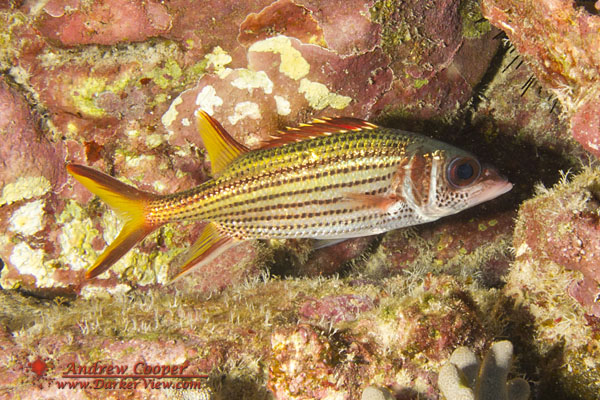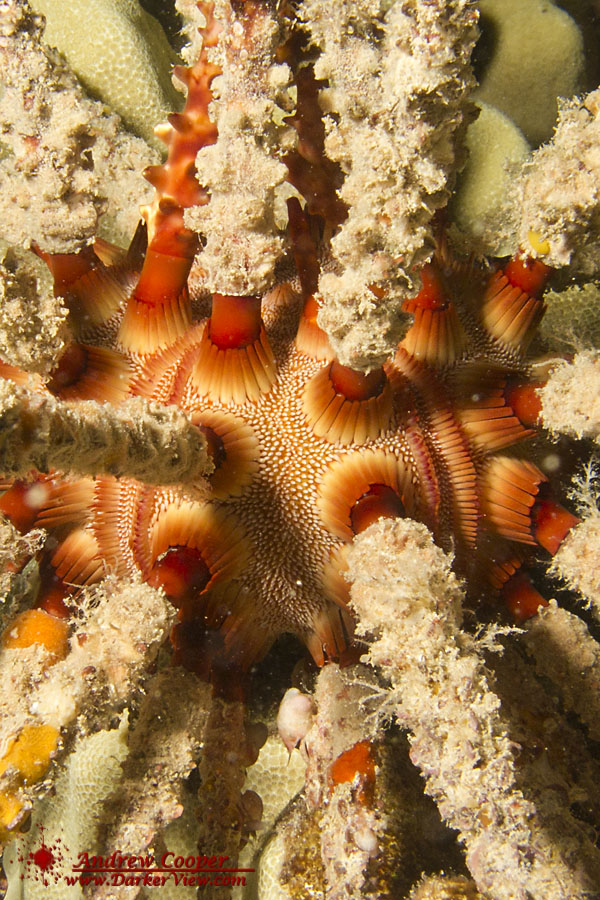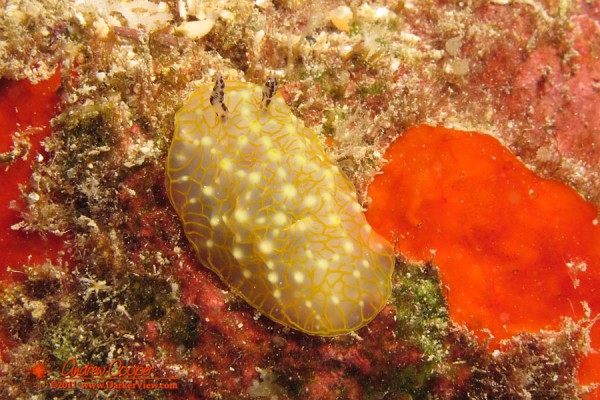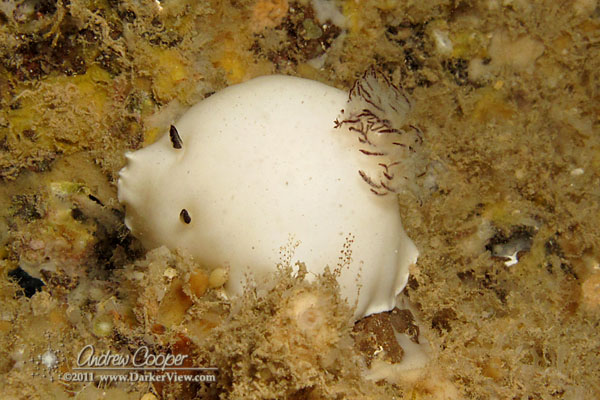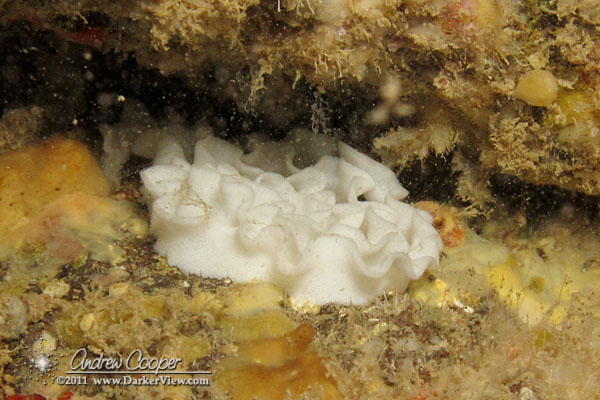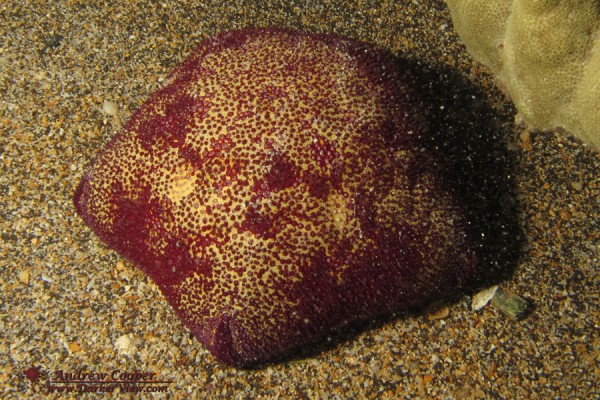With my face behind the camera, and looking the other direction, I did not notice the commotion I had caused. A swirl of colorful motion caught the corner of my eye. I turned to see a horde of butterflyfish attacking a seemingly uninteresting rock face. I watched for a moment before a memory triggered… Of course!

It is likely the gang of butterflyfish used my presence as an opening to overwhelm the Sergent. Local lore is full of examples of this behavior. The passage of a larger predatory fish, or a diver, will give the guarding male Sergeant a pause. A slim opening upon which the gang will swarm the eggs and feed. During Sergent breeding season it is not unusual for divers to mention schools of butterflyfish or tangs following them in and around the nesting areas.

I literally have to push my way through the swirling fish to examine the nest. The rock is covered with eggs, an amazing number of little purple dots covering an area of about a meter square. Despite the ongoing feeding frenzy, the nest seems intact, with nearly every bit of the rock covered with the neat little lines of eggs.
Hoover1 makes an interesting observation… “One can only wonder why Sergent eggs are so conspicuous while most damselfish eggs are hardly visible”
1) Hawaiian Reef Fishes, John P. Hoover, Mutual Publishing, 2008

